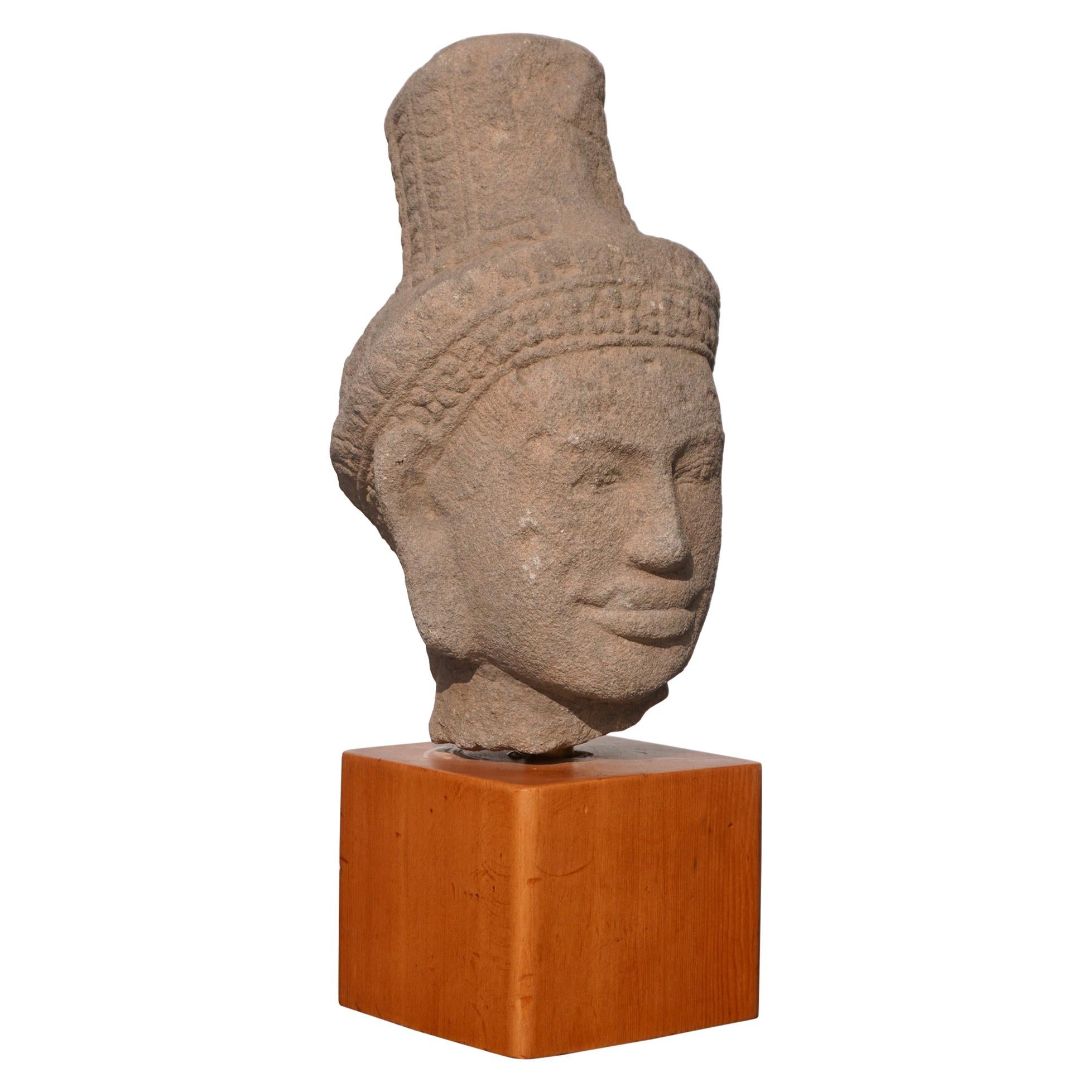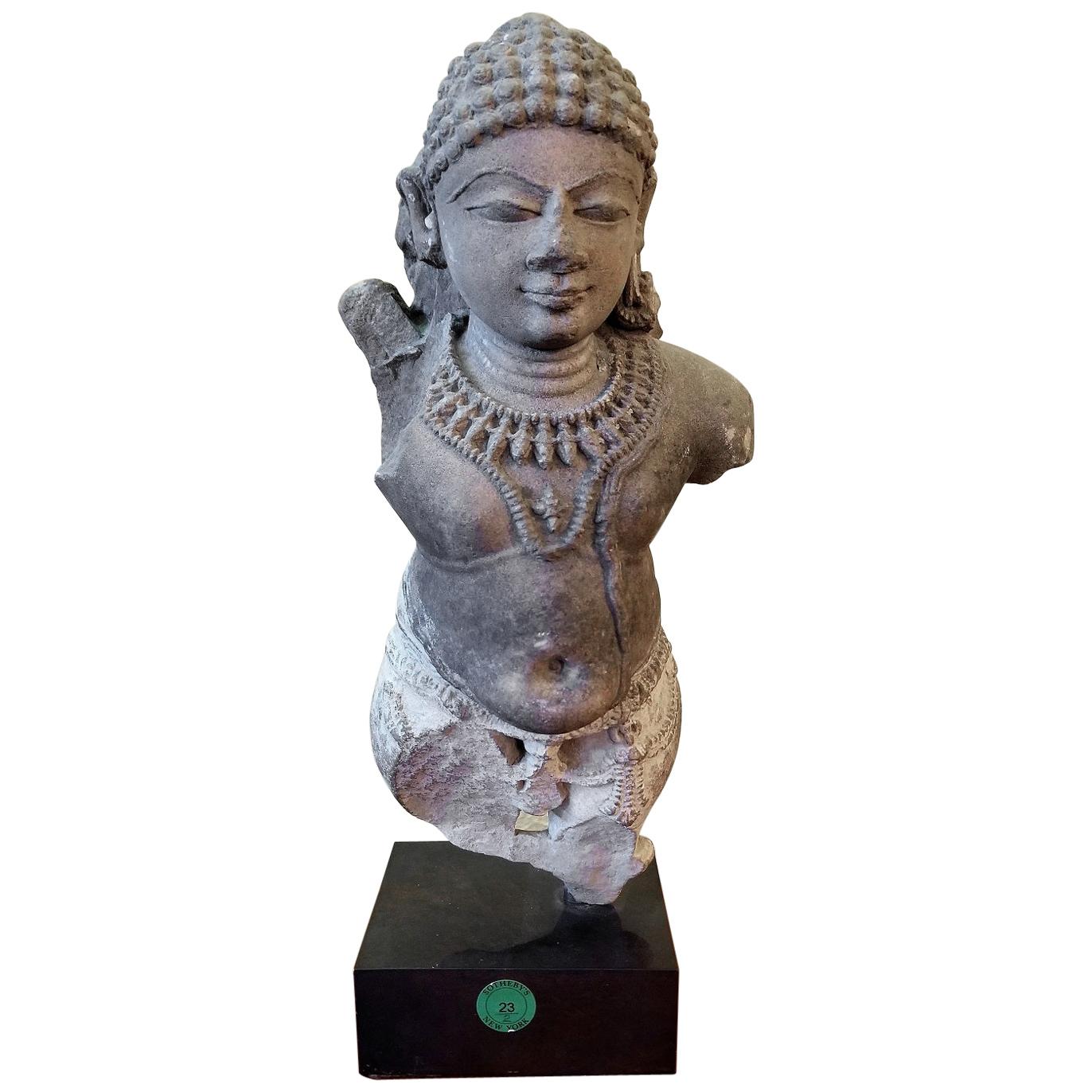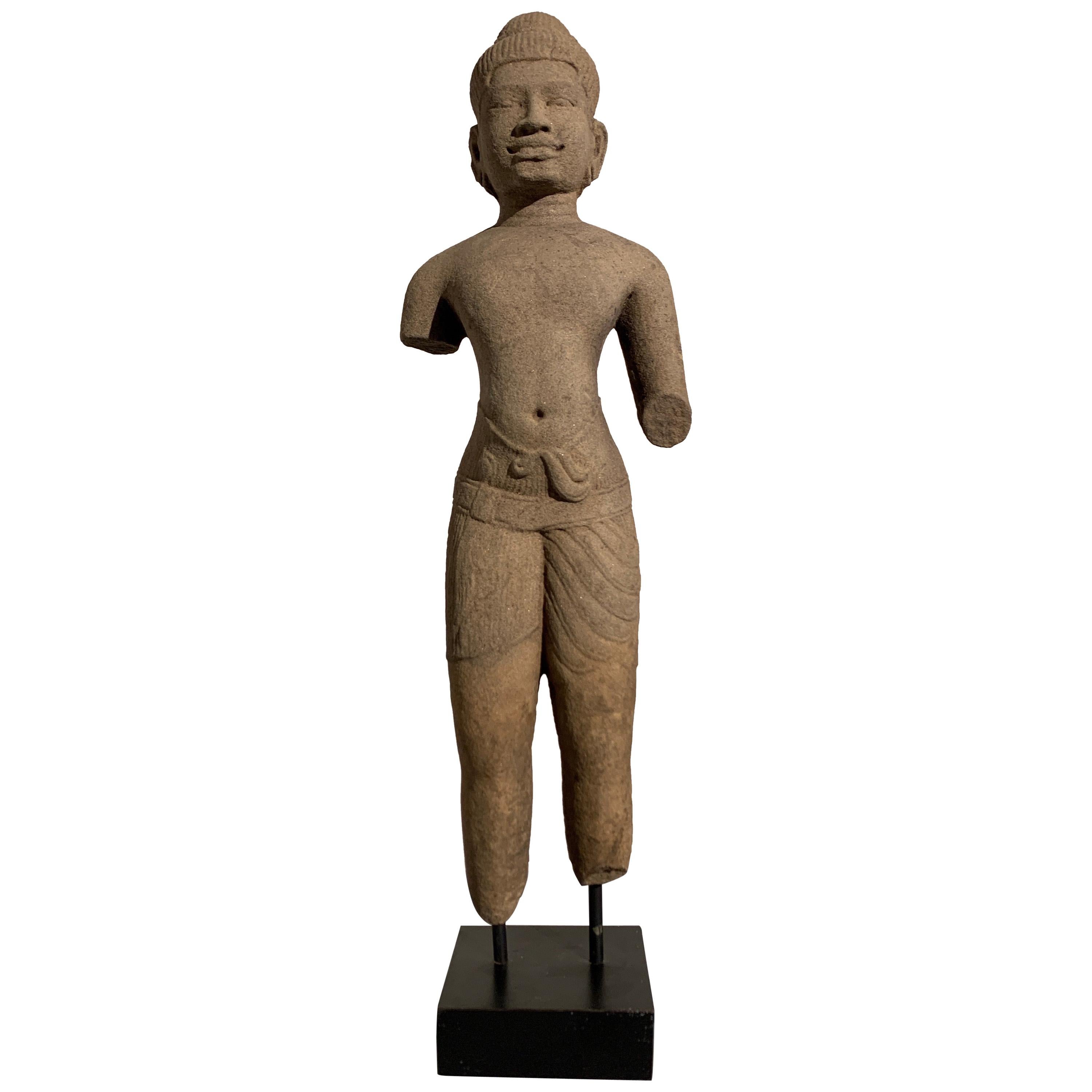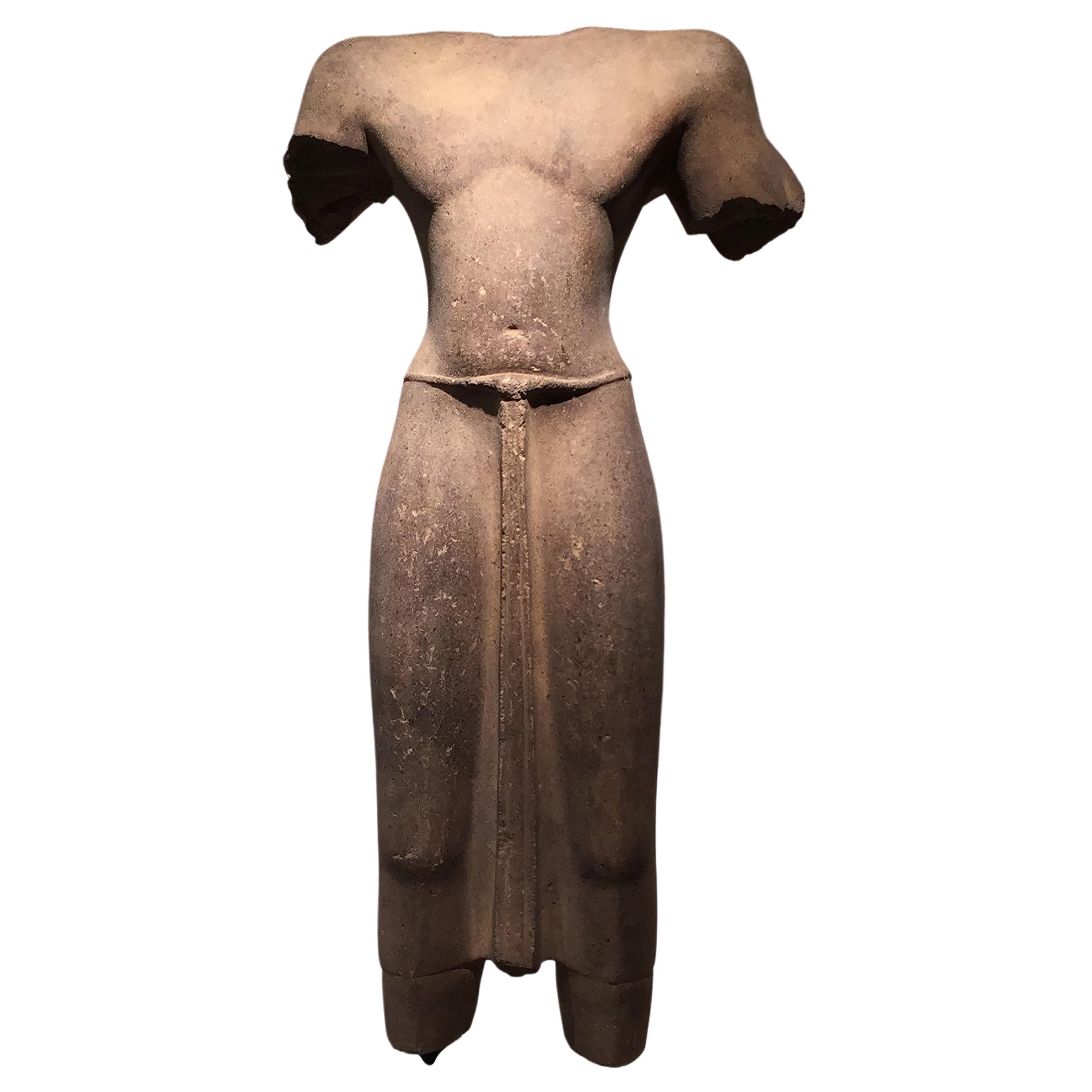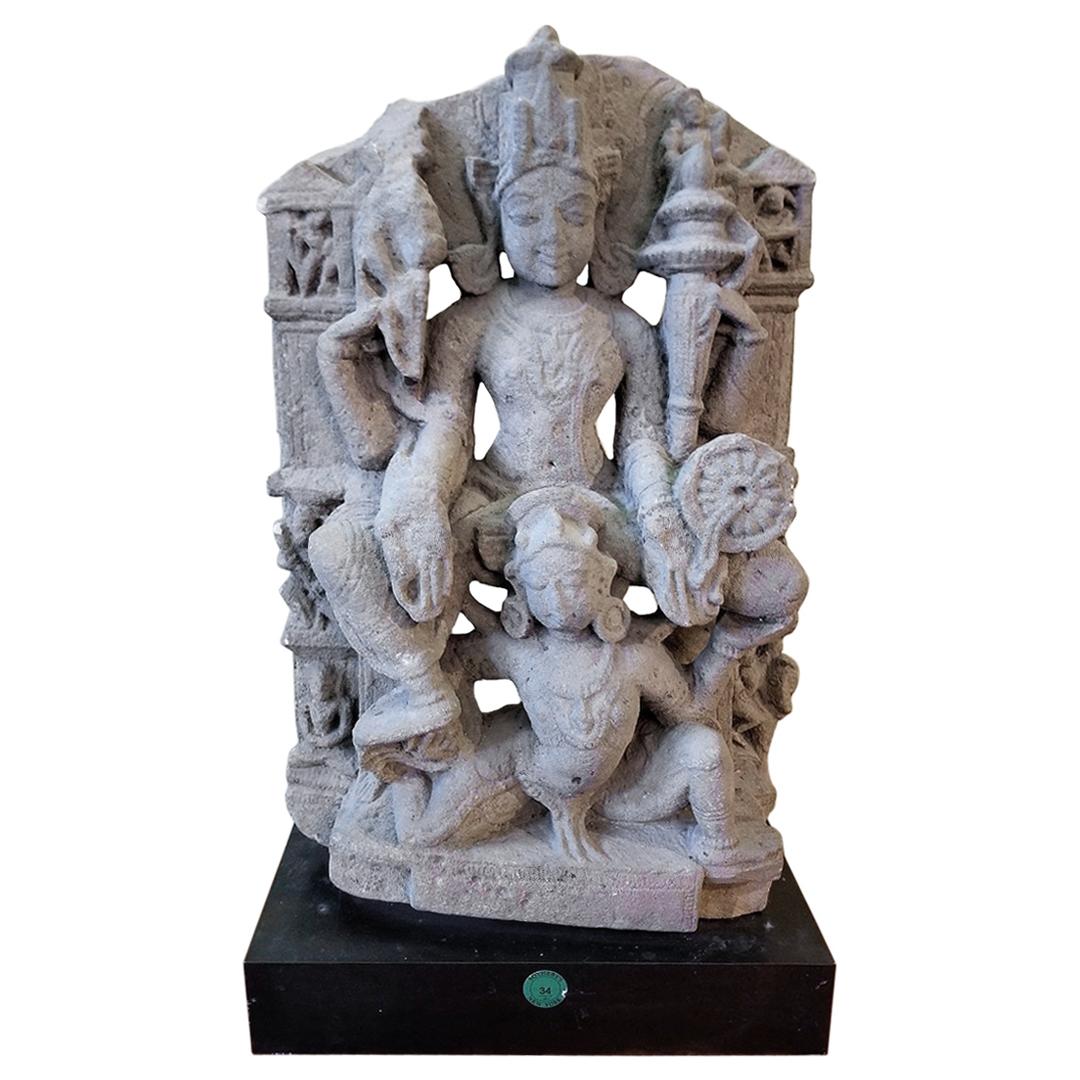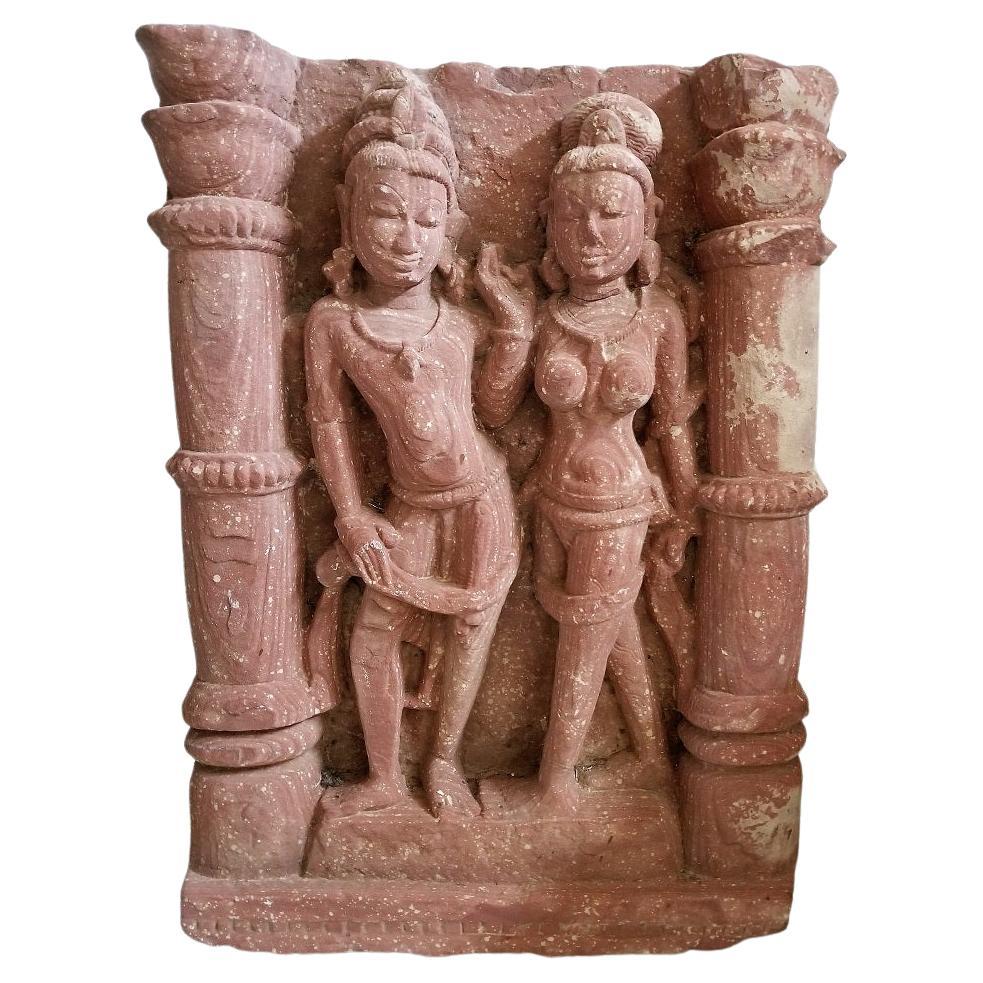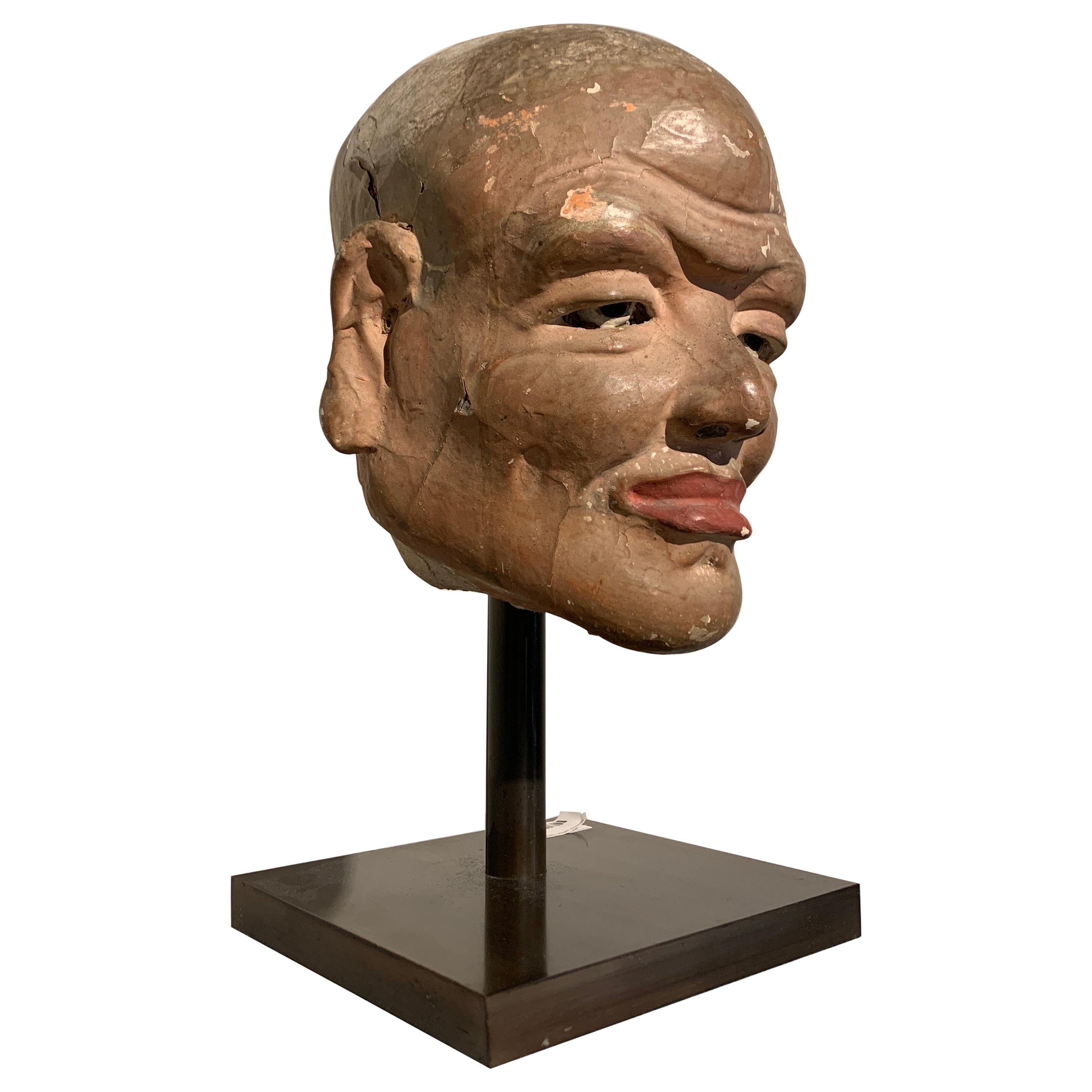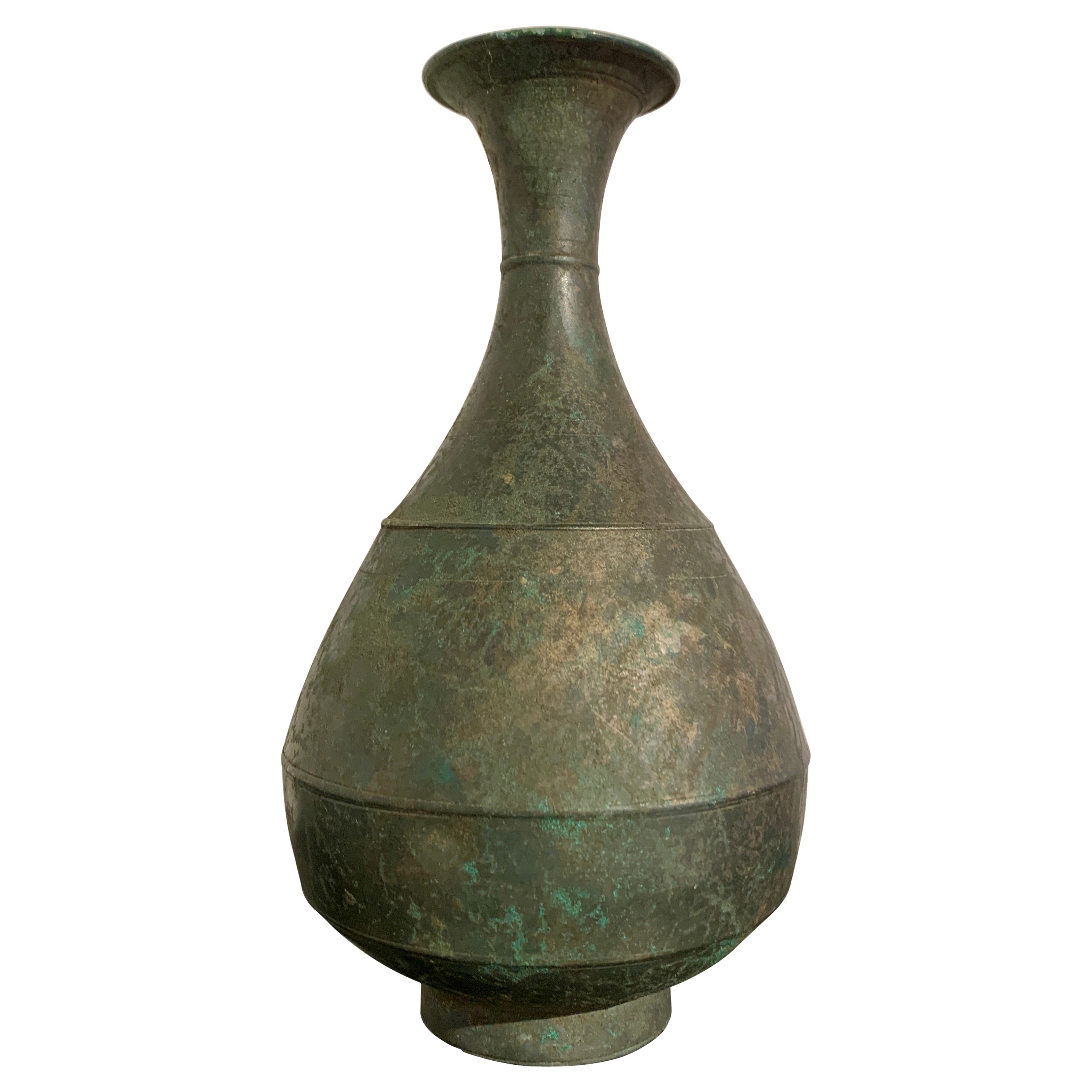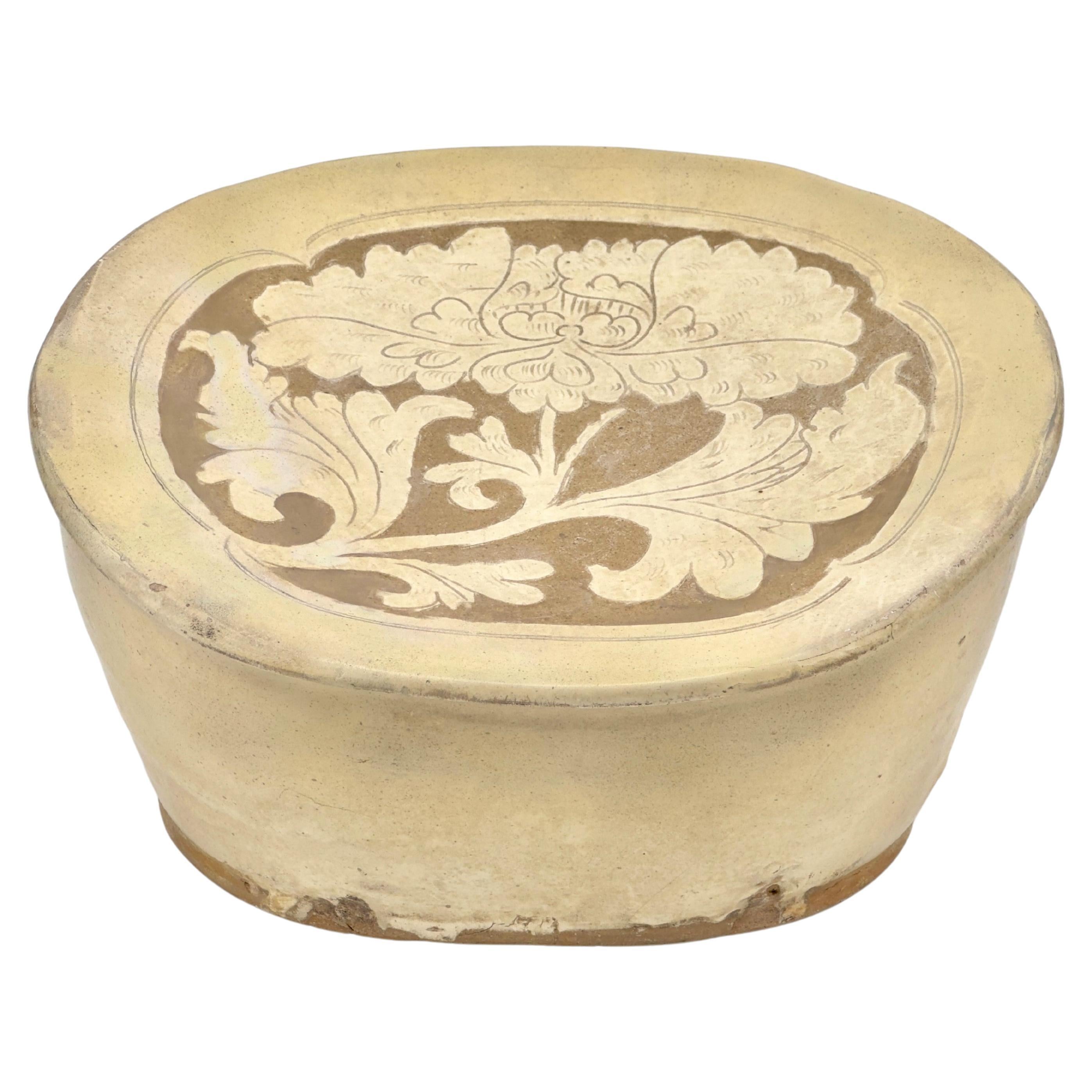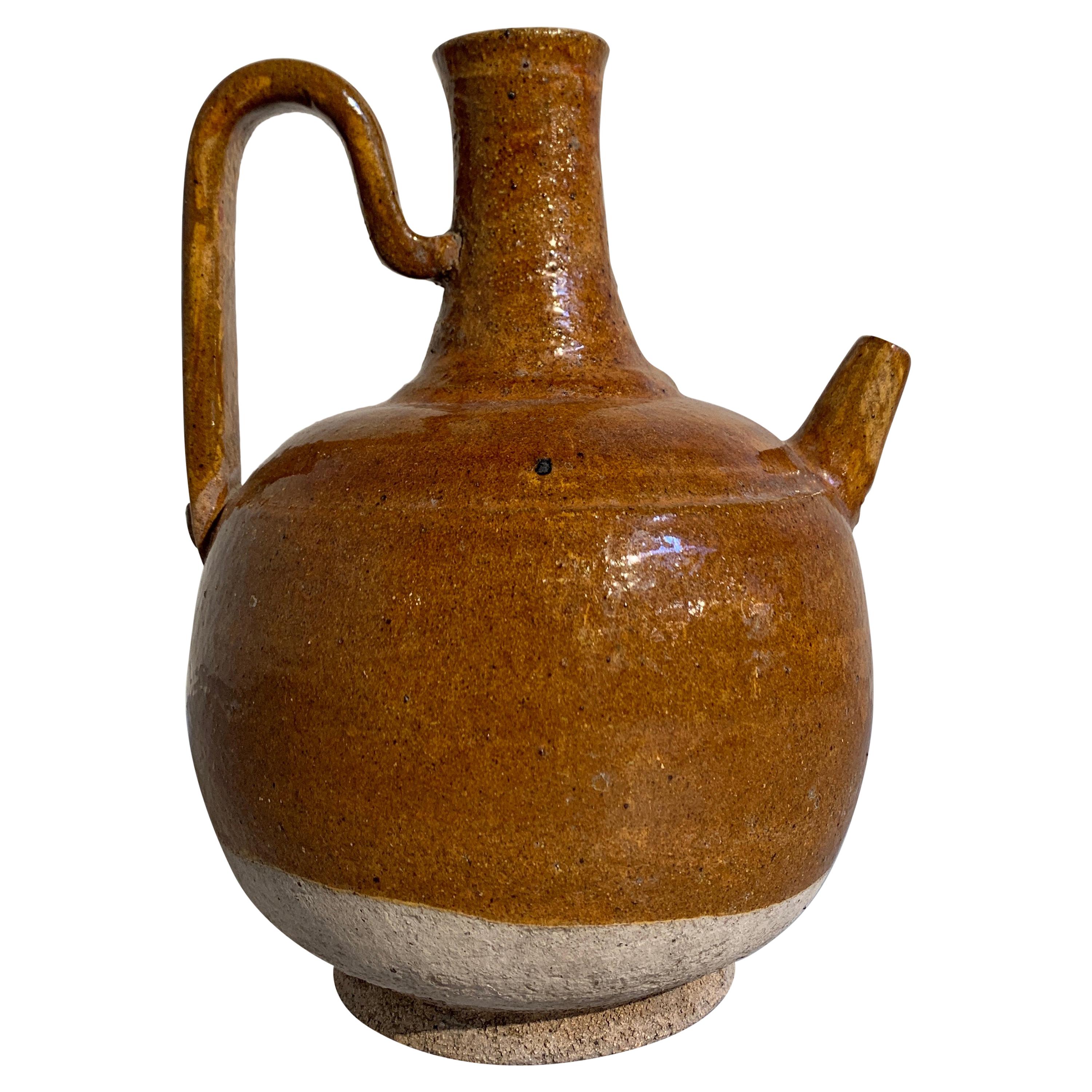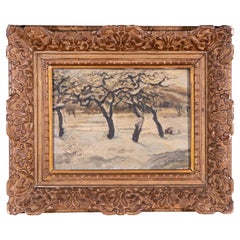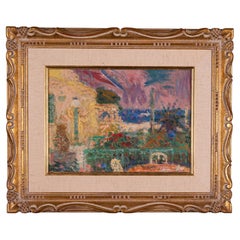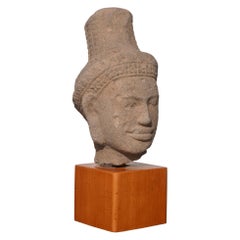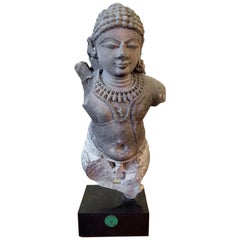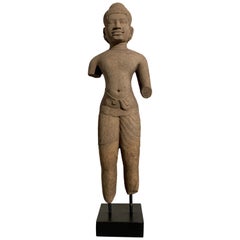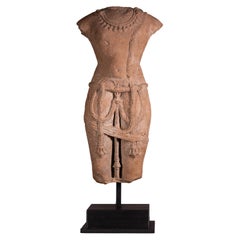
Sandstone Torso of a Male Deity Possibly Vishnu, Circa 10-11th Century
View Similar Items
Want more images or videos?
Request additional images or videos from the seller
1 of 10
Sandstone Torso of a Male Deity Possibly Vishnu, Circa 10-11th Century
About the Item
- Dimensions:Height: 19 in (48.26 cm)Width: 8.75 in (22.23 cm)Depth: 5.5 in (13.97 cm)
- Materials and Techniques:
- Place of Origin:
- Period:
- Date of Manufacture:circa 11th Century
- Condition:Wear consistent with age and use.
- Seller Location:San Francisco, CA
- Reference Number:1stDibs: LU7756232656242
About the Seller
5.0
Vetted Seller
These experienced sellers undergo a comprehensive evaluation by our team of in-house experts.
1stDibs seller since 2022
Typical response time: 5 hours
More From This SellerView All
- Japanese Modernist Painting of a Seaside Village by Torao Ataka Dated 1930By Japanese StudioLocated in San Francisco, CAA Modern oil painting of a harbor town with the water and mountains views in the distance. It is signed on the bottom left hand corner Ataka and dated '30 (1930). The brushwork is ...Category
Vintage 1930s Japanese Modern Paintings and Screens
MaterialsCanvas, Paint
$1,710 Sale Price40% Off - Japanese Impressionist Painting of Trees in Snow By S Kitayama Dated 1912By Japanese StudioLocated in San Francisco, CAAn impressionist painting of a trees in snow on a wooden board in period carved gilded frame. It is signed on the bottom right hand corner S Kitayama and dated 1912. Further inscription in Kanji on the back of the frame. Frame measures 17 x 20 1/2 inches Painting measures 9 1/4 x 12 3/4 inches Frame is original to the painting and of the period. The painter is most likely Seitaro Kitayama (Japanese, 1888-1945), an important figure in late Meiji period credited with being the father of Japanese animation before Walt Disney started his company. The painting style is impressionism which was keenly followed by a new generation of Japanese artists who either traveled to Europe for training or received Western publications on artists and gallery shows at home. Kitayama, Seitaro was born on March 3, 1888 in Wakayama, and died on February 13, 1945. In 1911, Kitayama became an apprentice to Tojiro Oshita and, while studying painting, also helped out with editing the art magazine Mizue. He soon moved to Tokyo and established the Western Art Guild of Japan and published Contemporary Western Art. He later joined the Fusain Art Group as a manager where he would support young western-style artists such as Ryusei Kishida and Sohachi Kimura by providing art supplies, in addition to holding exhibitions and publishing catalogues. On the other hand, he entered the Nikkatsu Mukojima Studio in 1916, proposed the inclusion of illustrations in intertitles, and made this his work. It was there that one of the first Japanese animations...Category
Vintage 1910s Japanese Modern Paintings and Screens
MaterialsPaint, Acrylic
$2,250 Sale Price40% Off - Japanese Expressionist Painting of a Sea View from a Balcony by Yoshio AoyamaBy Japanese StudioLocated in San Francisco, CAAn expressionist oil painting of a seaside view from a balcony in carved gilded frame. It is signed on the bottom right hand corner Aoyama. Signed Aoyama circa 1960s-1970s Frame measures 16 x 19 1/4 inches Painting measures 9 1/2 x 13 inches This painting is likely a scene from the French Riviera or Cote d'Azur. Yoshio Aoyama...Category
Late 20th Century Japanese Modern Paintings and Screens
MaterialsAcrylic, Paint
$945 Sale Price30% Off
You May Also Like
- Khmer Sandstone Buddha Shiva Head 11th CenturyLocated in Dallas, TXA sandstone figure head of Shiva Khmer, Baphuon style, circa 11th century. A rare Khmer gray sandstone head of Shiva. The handsome head of the divinity deity Shiva. His face with serene expression, almond-shaped eyes, ridged eyebrows and elongated earlobes, His headdress in tight rows and piled in tresses at the top of the head. Provenance: From a Canadian auction selling the estate of a French gentleman who amassed a large collection of Gandhara, Buddhas and Khmer items throughout his life. Measures: Head: 8 x 4.5 x 4.5 inches (20.5 x 11.4 x 11.4 cm) With stand: 10.7 inches tall Similar to item at Christies SALE 2828, Lot 1124 Indian and Southeast Asian Art 19, March 2014, New York. Shiva ( Siva, lit. the auspicious one) also known as Mahadeva ( lit. the greatest god) is one of the principal deities of Hinduism. He is the Supreme Being within Shaivism, one of the major traditions within contemporary Hinduism. Shiva is known as "The Destroyer" within the Trimurti, the Hindu trinity that includes Brahma and Vishnu. In Shaivism tradition, Shiva is the Supreme being who creates, protects and transforms the universe. In the tradition of Hinduism called Shaktism, the Goddess, or Devi, is described as supreme, yet Shiva is revered along with Vishnu and Brahma. A goddess is stated to be the energy and creative power (Shakti) of each, with Parvati (Sati) the equal complementary partner of Shiva. He is one of the five equivalent deities in Panchayatana puja of the Smarta tradition of Hinduism. According to the Shaivism sect, the highest form of Shiva is formless, limitless, transcendent and unchanging absolute Brahman,[16] and the primal Atman (soul, self) of the universe. There are many both benevolent and fearsome depictions of Shiva. In benevolent aspects, he is depicted as an omniscient Yogi who lives an ascetic life on Mount Kailash[1] as well as a householder with wife Parvati and his two children, Ganesha and Kartikeya. In his fierce aspects, he is often depicted slaying demons. Shiva is also known as Adiyogi Shiva, regarded as the patron god of yoga, meditation and arts. The iconographical attributes of Shiva are the serpent around his neck, the adorning crescent moon, the holy river Ganga flowing from his matted hair, the third eye on his forehead, the trishula or trident, as his weapon, and the damaru drum...Category
Antique 15th Century and Earlier Asian Antiquities
MaterialsSandstone
- 10/11C Pot-Bellied Vishnu Buff Sandstone SculptureLocated in Dallas, TXPRESENTING a STUNNING piece of Southeast Asian Antiquity, namely, a 10/11C Pot-Bellied Vishnu Buff Sandstone Sculpture from Central India. This piece has impeccable Provenance! So...Category
Antique 15th Century and Earlier Indian Archaistic Antiquities
MaterialsSandstone
- Khmer Carved Sandstone Male Deity, Style of the Baphoun, 11th CenturyLocated in Austin, TXA delightful carved sandstone sculpture of an unidentified male deity, Khmer, Angkor Period, style of the Baphuon, 11th century. The smil...Category
Antique 15th Century and Earlier Cambodian Sculptures and Carvings
MaterialsSandstone
- 11C Red Sandstone Pot Bellied Vishnu CarvingLocated in Dallas, TXPresenting a stunning 11C Red Sandstone Pot Bellied Vishnu carving. From Central India. This piece has impeccable Provenance ! It was purchased by a...Category
Antique 15th Century and Earlier Indian Archaistic Antiquities
MaterialsSandstone
- Stunning Sculpture of Vishnu in SandstoneBy John BrevardLocated in Coral Gables, FLThis stunning sculpture of Vishnu in sandstone is pre-Khmer, from Cambodia and dates circa 7th century. The size of this elegant artifact is 29 x 12.5 x 34 and it is currently located in a showroom in Europe so shipping may take a bit longer than usual. This piece is on a high museum quality metal base. This is a Classic and very fine example of the Angkor Wat style. We purchased this authentic sculpture circa 2012 from an established Belgium antiquities dealer. A letter, like the one in the attached photos, will be included with the purchase. This is a large and heavy sculpture...Category
Antique 15th Century and Earlier Cambodian Tribal Antiquities
MaterialsSandstone
- Celadon Vase, Five Dynasties or Northern Song dynasty, 10th-11th CenturyLocated in seoul, KRThe form of Longquan celadon vases from the Northern Song dynasty evolved from an early design with a long neck and tapering body to a later ovoid body with a shorter neck. Over time, the glaze developed a more olive tone, and the carved decorations became more pronounced and intricate. Examples of such vases include one without a cover dated to the Yuanfeng era (1078~1085) and documented in literature, and another similar vase without loop handles preserved by the Qingyuan County Cultural Relics Bureau. An earlier example featuring loop handles and a lotus-like cover is also mentioned in historical texts. The use of Longquan covered vases, especially as funerary jars for offerings like wine and grains, was highlighted by an inscription on a piece from the Sir Percival David Collection, London. This inscription wishes for the vessel to preserve fragrant wine for centuries, blessing the owner with prosperity, longevity, and a vast lineage, dated to the third year of the Yuanfeng period (1080). This practice was common in the regions of Southern Zhejiang and Northern Fujian. A similar celadon vase from the Linyushanren collection was auctioned at Christie’s Hong Kong, emphasizing the cultural and historical significance of these artifacts. Period : Five Dynasties or Northern Song Dynasty Type : Celadon, Zhejiang province Medium : Celadon Size : 31.5 cm(Height) x 11.5(Diameter) Provenance : Acquired in late 1990s from Hongkong Reference : 1) The British Museum image id - 01613270570 2) Christies New York 23–24 MAR 2023 - Important Chinese Ceramics and Works of Art - Lot 1012 (Price Range : USD 18,000 – USD 25,000 / Type : Related) 3) National Gallery of Victoria - Accession Number - AS5-1973 * Celadon from Five Dynasties (907~960) to the early Northern Song Dynasty (960~1127) The period from the Five Dynasties (907~960) to the early Northern Song Dynasty (960~1127) marked a significant transitional phase in the development of Chinese celadon ceramics...Category
Antique 15th Century and Earlier Chinese Ming Antiquities
MaterialsCeladon
